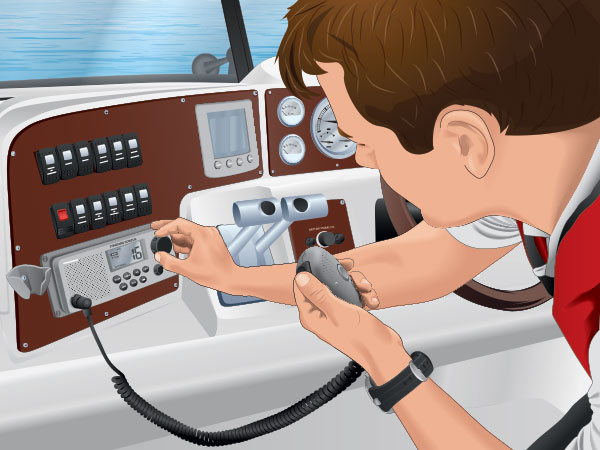How To Use Your VHF Marine Radio

Here are some basic pointers for VHF marine radio newbies. Even if you're a seasoned hand, it is worth pointing this out and passing it on to green hands aboard. Think of you're loved ones, friends, crew-mates, or passengers in your care completely helpless should you become incapacitated.

Make a practice to orient others on how to call for help should things go sideways. Adjust band to USA frequency when in US waters. Radios offered for sale in the US will include International band for waters outside the US and WX band for receiving NOAA weather broadcasts. Monitor channel 16, an international standard for distress and hailing. All mariners are required to monitor this channel whenever their boat is in motion.
If you are monitoring a second channel, you can use the scan button to toggle between 16 and channel of choice. This function will automatically switch to whichever channel transmission is heard.
When speaking, hold the mic so that fingers are clear of mic holes. (Mic location is typically a few small holes or slits somewhere on the periphery of the speaker grill.
Press and hold the Push To Talk (PTT) button to speak. Hesitate for one second before speaking. Otherwise, your first words will be missed. Release the Push To Talk (PTT) button when finished speaking to listen.

Only attempt to talk when all other parties on the frequency are silent. In VHF, the strongest signal dominates, which means you could be "stomping" on someone else's transmission. This is critical for distress call reception.
Speak slowly and clearly. VHF radio waves can distort the sound of your voice, making clarity essential. Use channel 16 for distress calls and hailing only. If you need to speak to another vessel, hail them on 16 and agree to switch up to a working channel on the recreational band such as 68, 69, 71, etc, to carry on the conversation.
When speaking on an open deck, be sure to shield the mic from the wind. Duck behind a console or block with a shirt before speaking or all that will be heard is rushing wind. Likewise, when listening in windy conditions, you may hold the remote mic to your ear. It doubles as a speaker. Use these tips and you'll be sounding like a seasoned old salt in no time flat.






